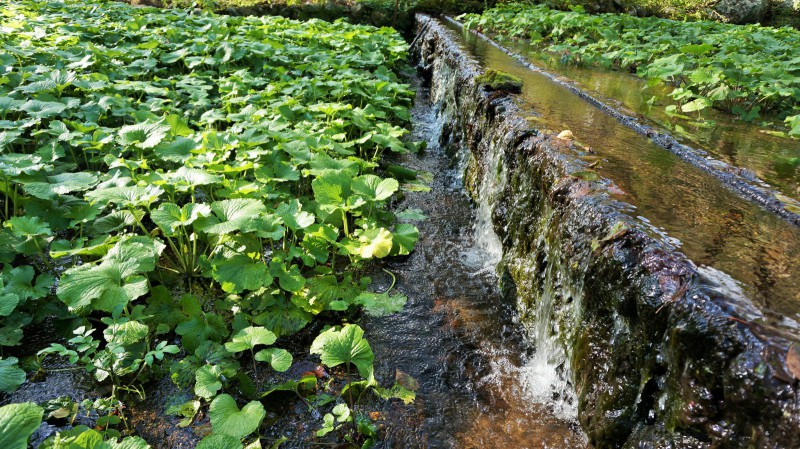Authentic Wasabi
What is Wasabi?
Wasabi (わさび), Japanese horseradish, is a root vegetable eaten with many Japanese dishes. Many of you have probably seen wasabi in the form of a finely grated green paste with your sushi, sashimi, or soba (Japanese buckwheat noodles). But did you know that even in Japan, most of the wasabi eaten is, in fact, not “real” wasabi? Then what have you been eating all along?
Wasabi is extremely difficult and expensive to grow, as it requires a lot (but not too much) of water and takes a whole year to mature. The plant is also very sensitive to its natural surroundings, and can only grow in an environment with the perfect conditions (cool temperatures with moderate sunlight). With a limited supply, it is understandable that most wasabi served in restaurants is not “real”. To answer the question above, if you eat sushi and are hit with a lingering spiciness, you are probably eating grated horseradish (Armoracia rusticana G.), said to have been first cultivated in Finland. This is different from Japanese horseradish (Wasabia japonica M.), which we will refer to for the rest of the article as ‘wasabi’. “Japanese horseradish” is actually a misnomer, since wasabi is not from a species of horseradish, as the scientific name suggests. Horseradish, a white colored root vegetable, is much easier to cultivate, growing faster and in a broader range of environments than wasabi.

Wasabi requires clean water to grow. © Zen no yu
Though there is record that wasabi has been eaten in Japan since the Heian period (794—1185), its use in nigiri sushi (握り寿司) is surprisingly relatively new, said to have started in the early 1800s during the Edo period (1603—1868). Today, most wasabi served in restaurants is either horseradish or mustard mixed with food coloring. Wasabi loses its spiciness soon after it is grated, and does not have a “lingering” hotness. For this reason, to fully enjoy wasabi’s crisp spiciness, wasabi should be eaten within as little as 15 minutes of grating.
Health Benefits of Wasabi
While wasabi has also been used in traditional Japanese medicine, recent research has shown many interesting beneficial properties of wasabi.
Traditionally eaten with raw food items like fish, it was found that wasabi helps prevent food poisoning and possesses antibacterial and antifungal properties. In Japan, products like wasabi-infused paper sheets were created to help preserve food in bento boxes (弁当箱). Wasabi is also good for the skin and anti-aging, as it contains many antioxidants and a special bioactive ingredient only found in “real wasabi”, 6-MSITC. This component, 6-MSITC, helps the body detox toxins, and helps prevent allergic reactions to pollen. There are even wasabi-infused masks that were made to help fight pollen allergy.
“Real” wasabi, with its many health benefits and delicious taste, is only served in about 5% of restaurants that serve wasabi worldwide. What better place to taste this delicacy than at its origin, Japan? Through TOKI’s sushi or soba (Japanese buckwheat noodles) experience, pair real wasabi with sushi or soba that you get to make yourself! Some of Japan’s finest chefs will guide you through for an unforgettable experience in Japan.
Wasabi (green paste) is commonly served with soba noodles (Japanese buckwheat noodles). ©TOKI



